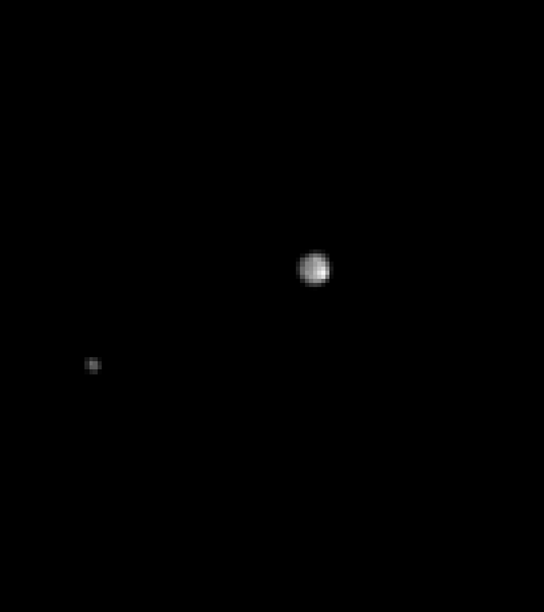
Pluto and its largest moon Charon. Credit: NASA/Johns Hopkins University Applied Physics Laboratory/Southwest Research Institute
These new images from NASA’s New Horizons spacecraft show one complete rotation of Pluto and its largest moon Charon.
This series of New Horizons images of Pluto and its largest moon, Charon, was taken at 13 different times spanning 6.5 days, starting on April 12 and ending on April 18, 2015. During that time, the NASA spacecraft’s distance from Pluto decreased from about 69 million miles (93 million kilometers) to 64 million miles (104 million kilometers).
The pictures were taken with the New Horizons Long Range Reconnaissance Imager, or LORRI. Pluto and Charon rotate around a center-of-mass (also called the “barycenter”) once every 6.4 Earth days, and these LORRI images capture one complete rotation of the system.
In the annotated version, a 3x-magnified view of Pluto is displayed in the inset to the lower right, highlighting the changing brightness across the disk of Pluto as it rotates. Because Pluto is tipped on its side (like Uranus), when observing Pluto from the New Horizons spacecraft, one primarily sees one pole of Pluto, which appears to be brighter than the rest of the disk in all the images. Scientists suggest this brightening in Pluto’s polar region might be caused by a “cap” of highly reflective snow on the surface. The “snow” in this case is likely to be frozen molecular nitrogen ice. New Horizons observations in July will determine definitively whether or not this hypothesis is correct.
In addition to the polar cap, these images reveal changing brightness patterns from place to place as Pluto rotates, presumably caused by large-scale dark and bright patches at different longitudes on Pluto’s surface. In all of these images, a mathematical technique called “deconvolution” is used to improve the resolution of the raw LORRI images, restoring nearly the full resolution allowed by the camera’s optics and detector.

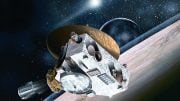
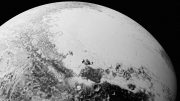
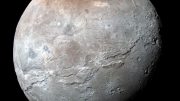
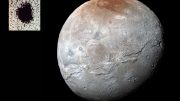
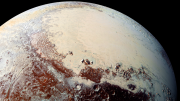
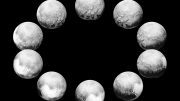
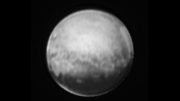
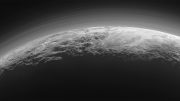
Be the first to comment on "New Horizons Spacecraft Views Pluto and Charon Rotation"